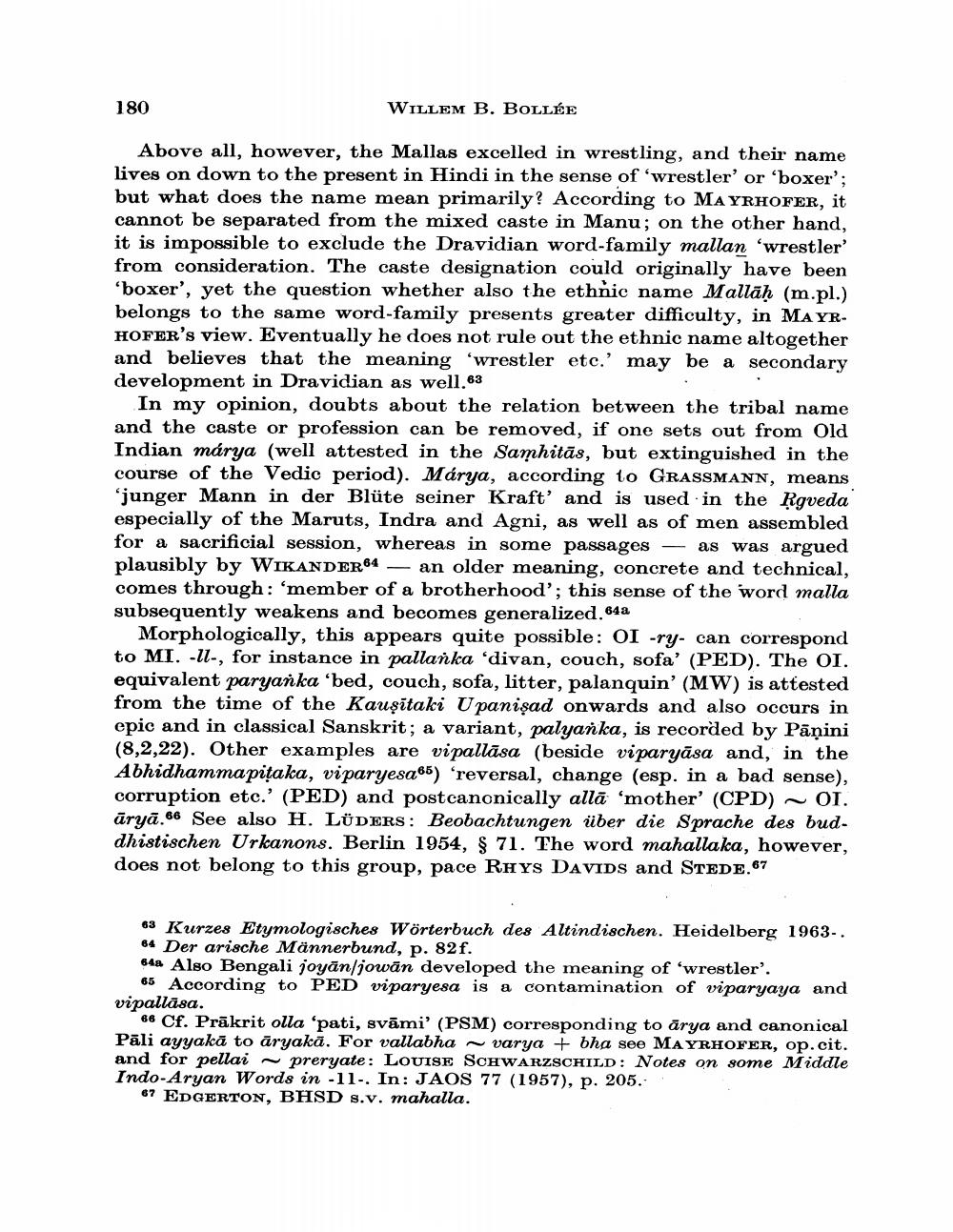Book Title: Indo European Sodalities In Ancient India Author(s): W B Bollee Publisher: W B Bollee View full book textPage 9
________________ 180 WILLEM B. BOLLÉE Above all, however, the Mallas excelled in wrestling, and their name lives on down to the present in Hindi in the sense of 'wrestler' or 'boxer'; but what does the name mean primarily? According to MAYRHOFER, it cannot be separated from the mixed caste in Manu; on the other hand, it is impossible to exclude the Dravidian word-family mallan 'wrestler' from consideration. The caste designation could originally have been 'boxer', yet the question whether also the ethnic name Mallaḥ (m.pl.) belongs to the same word-family presents greater difficulty, in MAYR. HOFER's view. Eventually he does not rule out the ethnic name altogether and believes that the meaning 'wrestler etc.' may be a secondary development in Dravidian as well." In my opinion, doubts about the relation between the tribal name and the caste or profession can be removed, if one sets out from Old Indian márya (well attested in the Samhitas, but extinguished in the course of the Vedic period). Márya, according to GRASSMANN, means 'junger Mann in der Blüte seiner Kraft' and is used in the Rigveda especially of the Maruta, Indra and Agni, as well as of men assembled for a sacrificial session, whereas in some passages as was argued plausibly by WIKANDER an older meaning, concrete and technical, comes through: 'member of a brotherhood'; this sense of the word malla subsequently weakens and becomes generalized, 64a Morphologically, this appears quite possible: OI -ry can correspond to MI. -, for instance in pallanka 'divan, couch, sofa' (PED). The OI. equivalent paryanka 'bed, couch, sofa, litter, palanquin' (MW) is attested from the time of the Kauçitaki Upanisad onwards and also occurs in epic and in classical Sanskrit; a variant, palyańka, is recorded by Panini (8,2,22). Other examples are vipallasa (beside viparyäsa and, in the Abhidhammapitaka, viparyesas) 'reversal, change (esp. in a bad sense), corruption etc.' (PED) and postcanonically alla 'mother' (CPD) OI. äryä. See also H. LUDERS: Beobachtungen über die Sprache des buddhistischen Urkanons. Berlin 1954, § 71. The word mahallaka, however, does not belong to this group, pace RHYS DAVIDS and STEDE.67 63 Kurzes Etymologisches Wörterbuch des Altindischen. Heidelberg 1963-. 64 Der arische Männerbund, p. 82f. 64 Also Bengali joyän/jowan developed the meaning of 'wrestler. 65 According to PED viparyesa is a contamination of viparyaya and vipallása. 66 Cf. Prakrit olla 'pati, svāmi' (PSM) corresponding to arya and canonical Pāli ayyakā to āryakā. For vallabha varya+bha see MAYRHOFER, op. cit. and for pellai preryate: LOUISE SCHWARZSCHILD: Notes on some Middle Indo-Aryan Words in -11-. In: JAOS 77 (1957), p. 205. 67 EDGERTON, BHSD s.v. mahalla.Page Navigation
1 ... 7 8 9 10 11 12 13 14 15 16 17 18 19 20
